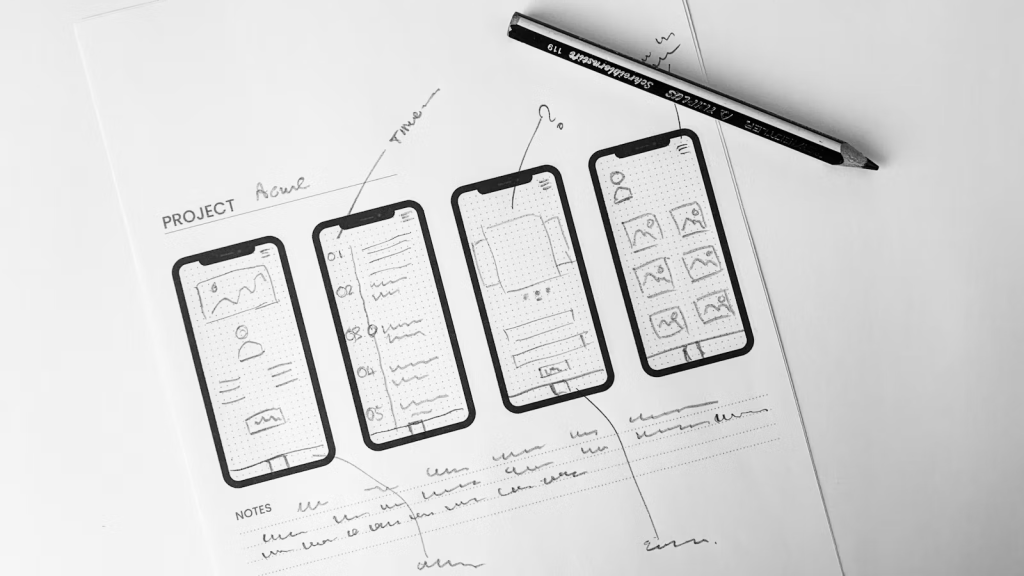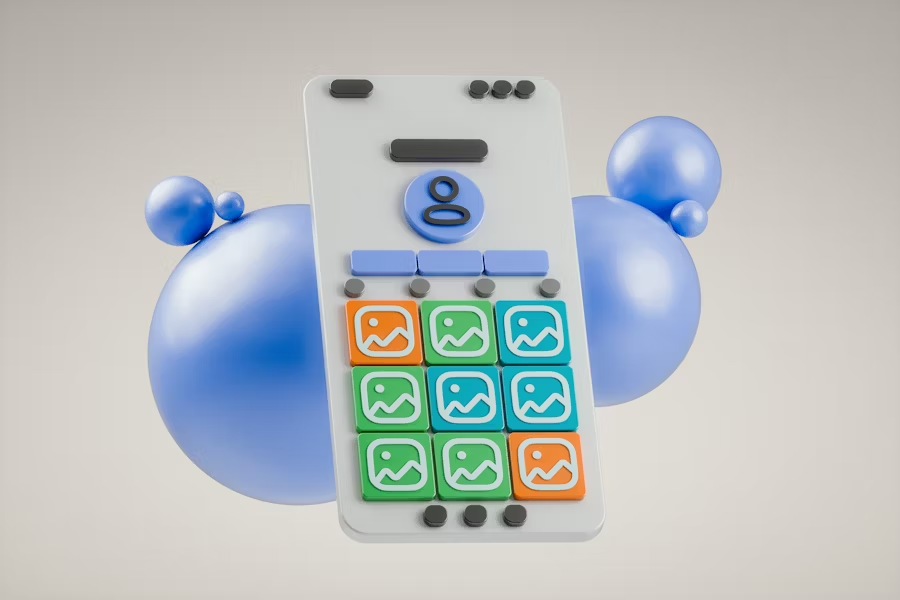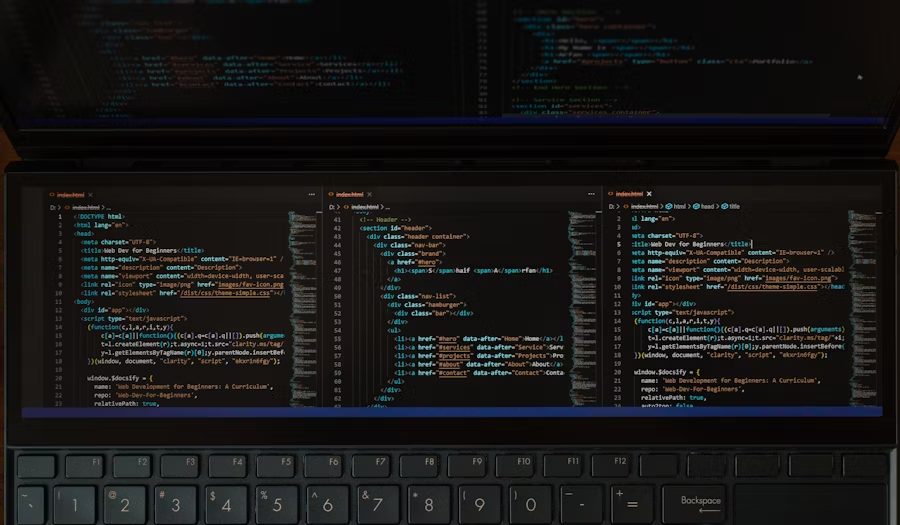
How Much Does It Cost to Build an App?
How Much Does It Cost to Build an App? Here’s What You Need to Know Wondering how much it costs to develop an app? You’re not alone, it’s one of the first questions people ask when planning a custom application. The truth is, app development costs can vary quite a bit depending on several important factors. In this guide, we’ll walk you through everything that goes into pricing so you can plan your budget with clarity and confidence. Let’s explore the key elements that shape the cost and help you make the most of your investment.
The app market has been growing steadily since day one and there’s no sign of it slowing down. That’s why startups and businesses of all sizes are investing heavily in web and mobile app development to stay ahead of shifting user expectations.
However, building an app can be a big financial commitment, especially for small to medium-sized companies. Without the right balance between cost and value, there’s a risk that the final product may not meet expectations.

So, how can you accurately estimate app development costs and plan your budget wisely?
To help you navigate this, we’ve put together a clear and easy-to-follow guide. You’ll discover what it really costs to develop an app, what factors influence the price, and smart ways to avoid hidden expenses. Let’s dive in and explore how to make app development both effective and affordable.
Average app development cost estimates
The cost of developing an app typically ranges from $40,000 to $300,000, a wide span that depends on several key factors like the app’s features, complexity, and overall functionality. While there’s no one-size-fits-all price, the best way to estimate the cost is by breaking down each component that contributes to the final total.
A great place to start is by clearly defining your app’s purpose and core features. Are you building a social media platform, eCommerce app, or video streaming service? What specific functions will users need? Who will handle the development, a freelance developer, an in-house team, or an app development agency?
Having a solid understanding of your business goals and what you expect from the app will not only guide the development process but also help you budget more accurately. The more detailed your idea, the easier it becomes to assess what resources and time are required.
Although developers can’t give a precise quote based solely on a general description, they can offer a realistic estimate by considering factors like the type of app, its complexity, and development phases. It’s also wise to factor in additional costs that may arise during the project.
In short, the clearer your vision, the closer you’ll get to an accurate estimate for your app development journey.
What affects an app development cost
You’ve probably come across online calculators that claim to estimate how much it will cost to build your app. While they can offer a rough idea, the truth is, there’s no one-size-fits-all tool for this. That’s because the cost of app development depends on a variety of factors. The best way to get an accurate estimate is to break down each part of the project and evaluate all the elements that go into building your app.
1. App Complexity
One of the biggest factors that influences app development cost is how complex the app is. Simply put: the more features and functionality your app needs, the more time and resources it takes to build, leading to a higher price tag.
But what exactly makes an app “complex”? It’s not just about how it looks. Complexity includes things like:
- The design and user interface (UI)
- Integration with other platforms or services
- Custom features and functionality
- Security requirements
To give you a general idea, here’s how app costs usually break down based on complexity:
- Simple apps , These include basic features like user registration, login, a simple dashboard, and profile management. Think of fitness trackers, to-do list apps, weather apps, or mini-games. These typically cost between $40,000 to $80,000.
- Moderately complex apps, These apps offer features like real-time messaging, push notifications, payment gateways, or social media integration. Examples include dating apps, food delivery platforms, or e-commerce apps. Costs usually range from $80,000 to $200,000.
- Highly complex apps, Apps in this category often require advanced technologies like AI, machine learning, AR/VR, or highly customized systems. Examples are healthcare apps, enterprise software, financial apps, or logistics platforms. Development costs can exceed $200,000, with some reaching $350,000 or more.
While app complexity is a major factor in determining development costs, it’s not the only one. Be sure to consider it alongside other important factors, which we’ll explore next.

2. Choosing the Right Platforms for Your App
Wondering which platform your app should launch on? This is an important step that directly impacts your development costs and timeline. Each platform,whether iOS, Android, or web, has its own unique requirements, so deciding early helps shape a smarter budget and strategy.
For example, if you’re planning to release your app on the Apple App Store for iPhone or iPad users, you’ll likely need a native iOS app, which is built specifically for that platform using its official programming languages and tools.
Keep in mind, building separate apps for multiple platforms can increase development costs and time. That’s why many startups start with just one platform, usually where their target audience is most active, and expand later as they grow. However, if you have the resources to launch across multiple platforms from the start, go for it! Just make sure you’re choosing the best approach for your goals.
Here’s a quick breakdown of the main app types to consider:
- Native apps: Developed specifically for one platform (like iOS or Android) using the platform’s official language. Best performance and user experience.
- Cross-platform apps: One codebase, multiple platforms. Saves time and cost, with good performance across devices.
- Web apps: Accessed via web browsers. No download needed, works across devices.
- Hybrid apps: A blend of native and web apps. Built with web technologies but wrapped in a native container.
By selecting the right platform (or platforms), you’re laying the foundation for your app’s success, both technically and financially.
Looking to launch a mobile app? Check out our full App Stores List for a complete overview of available platforms. The most popular choices are Apple’s App Store (iOS) and Google’s Play Store (Android).
When it comes to pricing, both platforms are quite similar, typically starting around $50,000. You can choose to develop your app for just one platform, or go with both iOS and Android to reach a wider audience and boost your app’s impact right from the start.
Not a tech expert? No worries! Our friendly team is here to help with professional iOS app development and Android app development. Whether you dream of a sleek iOS app or a user-friendly Android experience, we’ll turn your ideas into reality, designed for great performance, beautiful design, and smart budgeting.

3. App Features and Functionalities: What to Consider for Your Budget
When figuring out how much it costs to build an app, one of the biggest factors is the features and functionalities you choose to include. The more complex the features, the higher the development cost , sometimes adding thousands of dollars and months of extra work.
To keep your project manageable and cost-effective, it’s smart to focus on core features first, the ones essential to your app’s purpose and user experience. You can always add more advanced features in future updates as your app grows.
Here are some common app features and functionalities to consider:
- Native device features: Access to Bluetooth, camera, microphone, and Face ID.
- User login options: Email, phone number login, and password reset functionality.
- Admin and user management: Profile settings, profile photo, language selection, and account preferences.
- In-app messaging: Online status, file sharing, group chat, and reply options.
- Push notifications: Alerts for updates, reminders, and real-time messages.
- Location services: Maps integration, real-time user location, pickup, and delivery points.
- Payment systems: Integration with payment gateways, various payment methods, and transaction history.
- Device syncing: Seamless data synchronization across multiple devices.
- Data security: End-to-end encryption using symmetric/asymmetric methods and hashing.
For example, something simple like a login feature might cost around $1,000, while more advanced options like video calling could exceed $10,000.
That’s why it’s crucial to prioritize features that align with your app’s core functionality and offer real value to your users. This helps you stay within budget, keep your timeline realistic, and still deliver a polished, competitive product.

4. Custom App Design
A well-crafted visual design is a key factor in mobile app development costs, and it’s worth the investment. Great UI/UX not only grabs users’ attention but also keeps them engaged and boosts your app’s conversion rate. Beyond the app interface, branding elements like your logo, app icon, animations, and custom illustrations all add to the overall design expense.
The cost of custom design varies based on the number of app screens, the complexity of the visuals (such as animations), and how tailored the design needs to be. For a simple mobile app, expect to invest between $15,000 and $20,000, with around 400 hours of design work. If your app requires more detailed layouts and interactive elements, the cost can exceed $20,000, with 400–500+ hours of design time.
5. Back-End Infrastructure
The back-end infrastructure is the powerhouse behind your app, supporting everything users see and interact with on the front end like images, buttons, and text. It includes essential components like database management, server-side logic, and network connectivity, all working together to keep your app running smoothly. A stronger, more advanced back-end setup leads to better performance, but it can also increase development costs.

6. Maintenance activities
App development doesn’t end at launch, maintaining your app is just as important! After your app goes live, it’s essential to budget for regular updates, improvements, and support. In fact, over time, the total cost of maintaining your app can add up to twice the original development cost. The first year usually sees the most investment, as it often includes fixing bugs, enhancing features, and making design tweaks based on user feedback.
If your app costs around $60,000 to develop, you can expect the total maintenance budget to be roughly double that,around $120,000 over time. In the first year alone, maintenance expenses can reach up to $40,000. After that, ongoing costs typically decrease to about 15–25% of the original development cost each year.
Planning for these maintenance costs is essential for long-term success. By factoring them into your strategy early, you’ll ensure your app stays updated, secure, and competitive,setting your business up for sustained growth.
7. Team Size and Skill Level
The size of your team and their expertise play a big role in determining your development costs. Since labor makes up a large portion of the overall budget, even small changes in hourly rates can have a big impact. That’s why it’s important to choose the right professionals with the right experience to get the best results efficiently. You can choose from different team setups, whether it’s building an in-house team, hiring a trusted outsourcing partner, or working with skilled freelancers.
One important factor to think about when building your app and setting a budget is where your development team is located. Rates for services and hourly wages can vary significantly between countries. That’s why many startups choose to outsource to offshore teams, often a smart move for reducing costs without sacrificing quality.
On average, hiring a professional mobile app development team can range anywhere from $20,000 to $100,000, depending on the number of hours worked and where your team is based. If you’re only looking to hire for a specific part of the project, your final cost will depend on the specialist’s hourly rate and any additional fees involved in completing the task.
App Development Cost by Stage: A Friendly Guide to Smarter Budgeting
Planning your app budget? One of the most effective ways to estimate costs is by looking at each stage of the development process. Breaking it down into key phases helps you understand where your money goes and what to expect at every milestone.
Let’s explore what the app development journey looks like, starting with the very first stage.
Stage 1: Discovery & Planning
The discovery and planning phase sets the foundation for your app. Here, your team dives into market research, business goals, and user needs to shape a clear vision for the project. This is where ideas turn into a practical roadmap.
Key activities during this stage include:
- Business analysis: Identify your goals, challenges, and opportunities.
- Market & competitor research: Analyze trends and find your niche.
- User research: Understand what your users really want.
- Product validation: Ensure your app idea meets real-world needs.
- UI/UX review: Evaluate the current experience and plan for improvement.
These tasks involve various costs such as research, wireframing, user testing, and prototyping. Typically, the discovery phase costs between $3,000 and $7,000, although complex projects may go beyond $10,000.
Investing in this early stage helps you avoid costly changes later and speeds up your time to launch.
Build Smart on a Budget
Creating an app for your business is an exciting journey, but it does come with its challenges. It takes time, careful planning, and a lot of effort to bring your ideas to life. That’s why having a skilled development team by your side is so important, they help turn your vision into a fully functional product. Just as important is smart budgeting. By understanding the time and costs involved, you can plan effectively and set your app up for long-term success.
Publication Date
July 23, 2025
Category
Guide
Reading Time
11 Min
Author Name
Reem Kamal